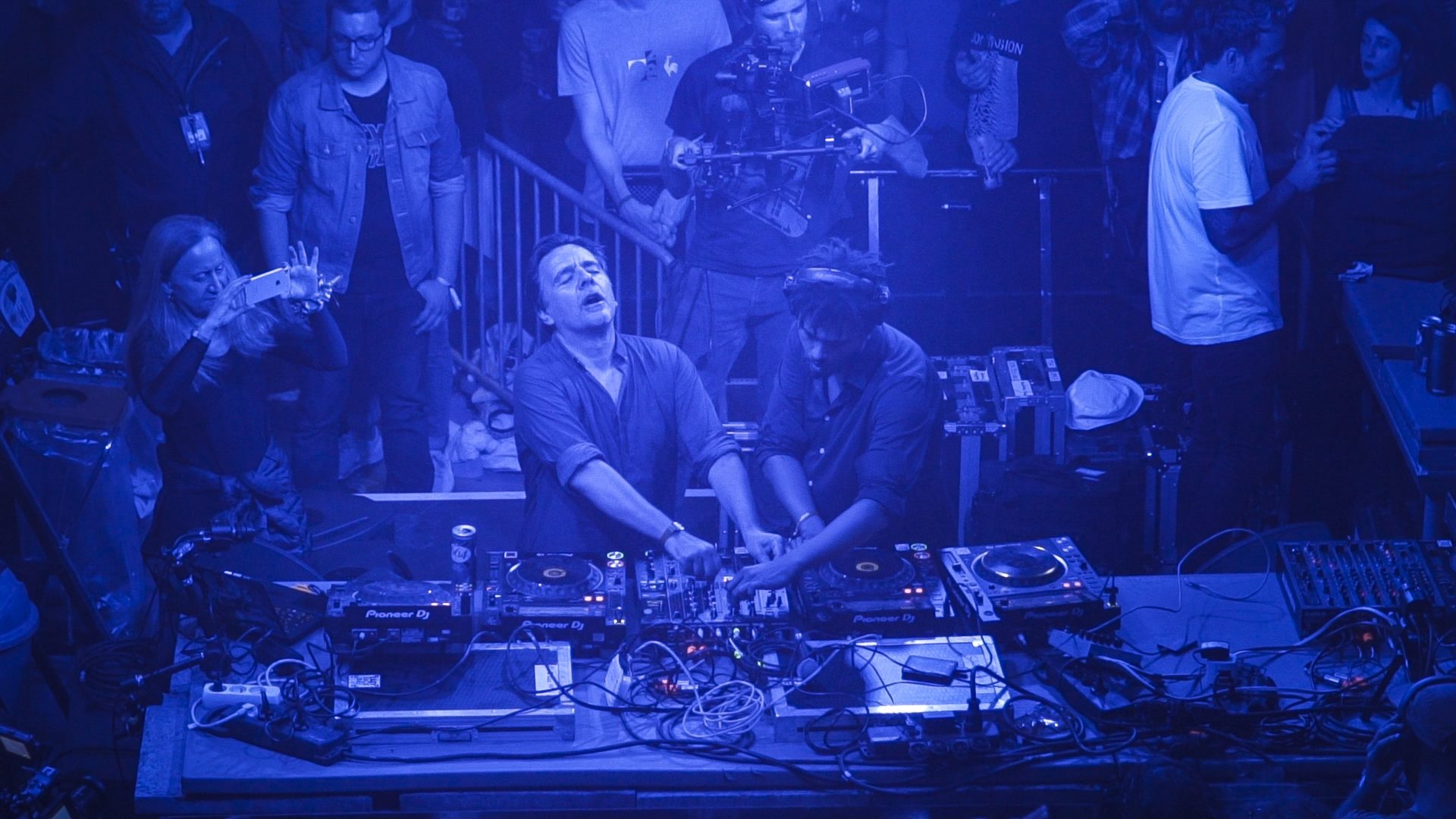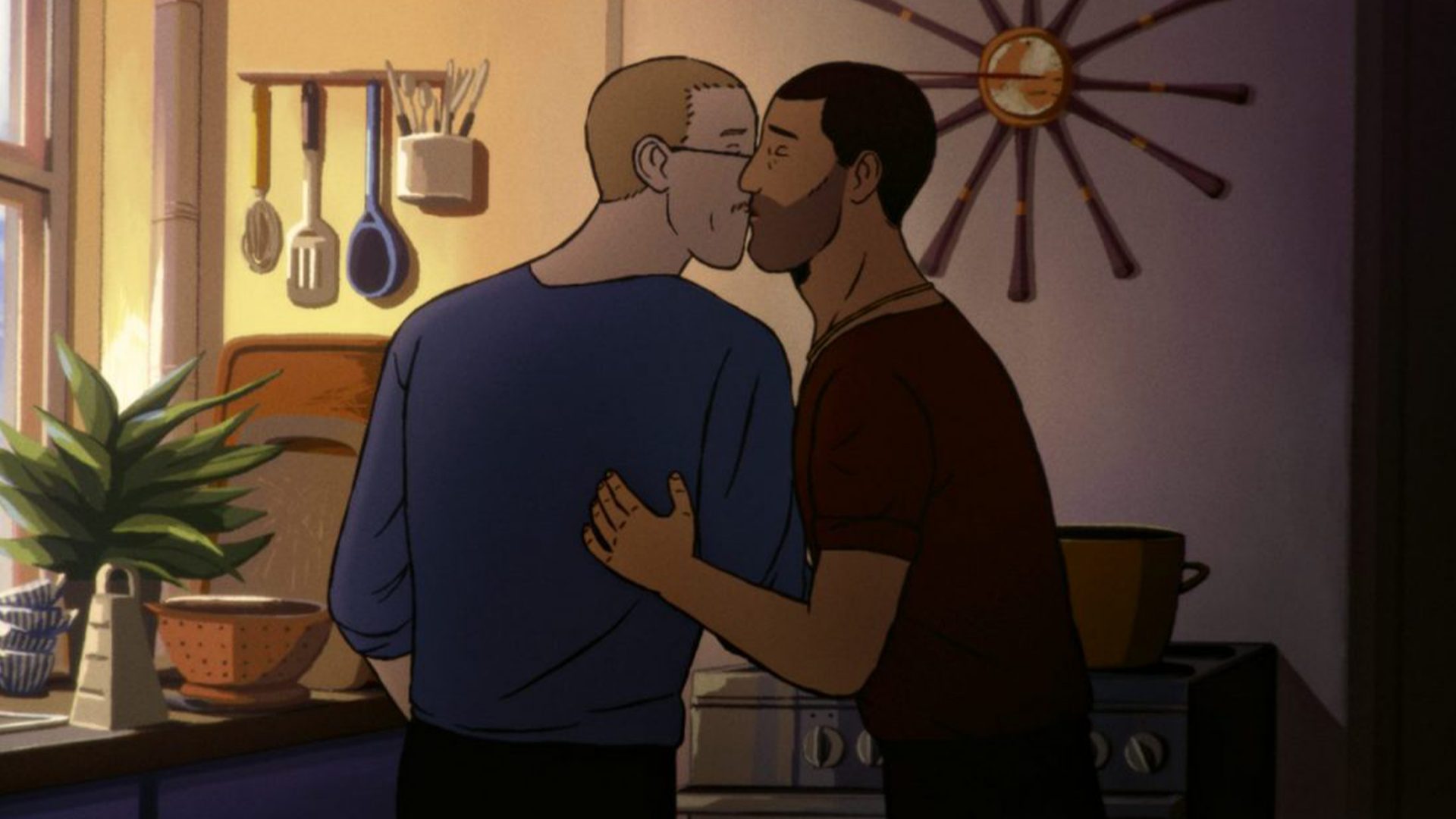Many people, I suppose, claim to be the founders of a musical movement, to
have been there at the start of a pop cultural moment.
We shall probably never know who definitively invented house music – some say it was in Chicago, or Detroit, but others say it didn’t really flourish
until New York discovered it and blended it with disco. But in Europe, at least, there were a handful of people there right at the beginning and Laurent Garnier was definitely one of them.
The French DJ, producer and presenter has been immersed in the dance music scene since the late 1980s, when he was the first “foreigner” to be
given a regular slot at a rough-hewn Manchester club called the Haçienda.
“It was wet in there,” he recalls. “The water just dripped from the ceiling like
it was a shower, but it was just condensation and sweat.”
Now he’s the subject of a documentary, Laurent Garnier: Off the Record, a very handsome film by French doc maker Gabin Rivoire who follows Garnier on the road in 2019, to Sonar in Barcelona and to Bassiani in Tbilisi, Georgia, as well as to Tokyo and Detroit. They visit past haunts, and dive into huge clubs, the camera getting right behind the decks, and picking up interviews with techno pioneers along the way, including Jeff Mills and Kerri Chandler of the older school, and the Blessed Madonna and Peggy Gou who carry the dance music flame forward.
He’s had a “big weekend” when I talk to him via Zoom at his home in Provence, and is getting ready for one more, coming to BFI Southbank for the long-delayed UK premiere of the film, followed by a big party where he may or may not play. “I might bring my USB stick with me,” is all he will say. “I have stuck to the plan for a few years now, one weekend on, one off. I can’t do it all the time. I am not so young (he’s 56) and I have a life, you know, that isn’t just playing records.”
What does he do in his spare time, then? “Oh, I play records…!” He has a big laugh, a hearty chuckle, and speaks great English, with a few glottal stops and a few ‘“mates” and “all rights” thrown in, legacies of his mid-80s residencies in London and Manchester.
My favourite strand of the film is the rehousing of Garnier’s enormous collection of records – it emerges he was looking for a new house specifically to find more space for them. The film says its 55,000 records. But now he tells me: “It’s 60,000 in fact. When I was measuring up with the architect, we forgot to factor in a 15-metre-length run of records that was in another room, so suddenly I have 5,000 more discs than I thought. It’s funny, I did have this nagging feeling that something was missing…”
Garnier, like Eliot’s Prufrock, measures out his life in records. They tell his story and, in the doc, they’re handled like precious artefacts, the camera roving over the neatly arranged spines so we can salivate over the rarities and, often, recognise favourites of our own, ones we might even have in
our own more modest collection.
There’s a Fitzcarraldo-like moment where the records are boxed up and piled on the back of a trailer on a tractor and transported across the French countryside before being unloaded by a team of villagers, all passing a box along a line and up to the new house, like an army with supplies, or like they used to do in vineyards.
“That is my real tractor,” Garnier tells me proudly. “I told you I have another
life.” For someone used to jetting around the world’s super clubs, he lives la vie tranquille in Provence where he settled 20 years ago. He has recently just moved to a neighbouring village, having finally found an old farmhouse he could convert into a sort of museum for his record collection.
What’s in it, I wonder? “Oh, everything. Jazz, soul, world, techno, dance, disco, French rock, terrible pop music, Japanese hip hop – my life, you know. I’ve got the first record I ever bought in there.”
Which was…? “A terrible thing called Oh Les Filles (it’s by Au Bonheur des
Dames who, by the look of their video on YouTube, seem to be a sort of French equivalent of Showaddywaddy) and I got it home and played it non-stop maybe 50, 60 times until my dad ran up to my room and said: ‘If you play that record one more time I will break it over my knee…’”
Of course, Garnier no longer travels the world with a big box of records picked from the collection before going out, like in the old days. It’s all USB
sticks and digital files now but, he says, that’s because he finds it a much better way of playing, being able to loop and build and mix.
“A DJ set is all about the whole thing,” he explains. “You can’t just hear a bit of
it in isolation or it won’t make sense and it’s very much about being in that room, playing that crowd. That is what I love to do, that is the job.”
We get to hear a bit of Garnier’s all-time key record, which he cites as Donna Summer’s I Feel Love, a disco classic produced by Giorgio Moroder and often seen as the foundation of house and techno, particularly through its legendary Patrick Cowley remix. It’s the tune I met my wife to, on a
dancefloor in Ibiza in 2007, and we have barely been apart since the record started up. Thank goodness the DJ wasn’t playing Eye of the Tiger…
Obviously, I share this information with Garnier, who is delighted. “That record is the root of the tree, everything branches off from it, it’s jazz, it’s disco, the vocal is soul, there’s some dirty rock elements in there and the beat is techno. It is genius.”
While I like that bit of the movie for personal reasons, I’m also connected to Garnier in a couple of other ways. I used to see him play at the London nightclub the End in the early 90s, as well as at the Rex in Paris. I even once
saw him, in 1989 I think, at the Haçienda and I’ve often visited the French Embassy in Kensington Gardens, which the film visits, too, because Garnier, it turns out, was a waiter at the embassy for two years in the mid-’80s.
“You’ve been there?” he seems incredulous. “That was my house,” he says. “Well, I had a room upstairs, but I lived there, a bunch of us lived there and we worked there and we went out clubbing and we raided the wine cellar. It was amazing. That’s when I discovered the night life, and then, after that, I moved to Manchester.”
Within a week of arriving up north, he was given a guest slot at the Haçienda, which became a residency. There are some lovely archive shots and clips of that era, some of which I’d never seen before.
“We did all know it was something special at that moment, and not just because people were eating pills like smarties,” he says. “It was a musical
revolution for Europe, taking music that was coming from Chicago and doing something very different with it, consuming it in a very different way,
raving all night to it.
“But you know legends are made when things disappear. People only remember the good version of the Haçienda, which lasted about three years. After that, it got pretty grim, with gangs and drugs taking over, which led to some very nasty atmospheres. But that is the way of nightclubs; they come and they go, that is why there is always something sad about nightlife, it will all disappear, it just exists in a moment.”
I love a bit of existential reflection with my techno, so I ask for some of the great disappeared club nights. “Ah, so many, and so many are gone,” he says.
“I loved the End in London, a brilliant club; Yellow in Tokyo was amazing; the Rex in Paris is going soon and that’s a beautiful place with a wonderful sound system and so many memories for me; and there was Concrete in Paris, which revived the techno scene in that city when it was all getting too glittery and bullshitty and they just got serious about the music again, I loved that.”
The documentary does put the dance movement in its proper cultural context, too, discussing the political statements the rise of EDM (as the
Americans like to call it, a phrase I hate) has brought with it, particularly in places such as eastern Europe and Tbilisi, where a two-day rave of 10,000
people took place outside parliament in response to a police raid at the Bassiani club. The flip-side of drugs trade and big property scandals on islands such as Ibiza, and criminality and corruption, is brushed over, of course, with more focus on the pure passion and dedication to music.
“I don’t drink or do drugs, so for me, it’s a very healthy scene,” says Garnier.
“And this isn’t a film just about my beautiful self, you know, because I’m a
product of the scene itself; everyone else is part of it too, I just pass it on. It’s
all part of painting a bigger picture: without Detroit, without those people, I
don’t exist, so it’s a healthy thing to recognise your place in it and to see how
long this has been going on. It’s over 35 years if you think about it,” he says.
“I mean, house music is the last musical revolution. There hasn’t been one since – before there was punk, then there was hip-hop, but the spread of house and techno is now global and it still feels very healthy to me. What’s
weird is that 18-year-olds, like my son, still like it and really, they should rebel because it’s their parents’ music, no?
“But I don’t see anything wrong with it and there are, of course, little offshoots and underground pockets in certain cities, like trap and drill music
and grime in London, and these aren’t just huge rooms full of people with their hands in the air. But it’s all dance music, really.”
What will happen to those records, those metres and metres of vinyl? He says he’s been digitising the collection by playing it on his 24-hour online radio station PBB (Pedro’s Broadcasting Basement, after one of his earliest DJ
alias names). I have a listen and, whaddayaknow, the first track is from A Certain Ratio, one of the Manchester bands associated with the Haçienda.
Then comes Les McCann and Eddie Harris’s jazz workout Compared to What,
then some Japanese rap, then Italian singer Adriano Celentano, before some
proper UK drum and bass from Spectrasoul.
Garnier doesn’t speak in between but the music is still playing when I check
in later, all of it from his record collection, he says. “And it’s been like that for 10 years, day and night,” he says. “I don’t tell many people about it but it’s always there.”
What does the future hold for him, for music and for this vast vinyl collection? “I tell my son it’s a heavy heritage, ridiculous, really,” he says.
“But I don’t mind. I’m what we call a ‘passeur’, I just pass the music on to
others as soon as I hear it, in clubs, on radio, at festivals, I go into schools and teach. I just don’t mind what happens to the collection as long as it doesn’t get split up. You know, it’s all my story, all of it, each song. You can’t isolate the jazz or the French pop, or the funk or the rock. You have to look after it all, that’s the collection.”
And the next stage of clubbing and music. Are we going to be doing this in 20 years’ time?
It’s something the documentary asks many of its interviewees, none of them
coming up with the answer. The pandemic was tough for the clubbing community, of course, and for DJs like Garnier who confesses he couldn’t listen to techno during the lockdowns. But it’s now stronger than ever, he says.
“You know, when I started dance music in Paris in 1990, we’d only been going a couple of years before the new generation announced themselves, the ones who became ‘the French Touch’ scene, like Daft Punk and all this, who were more influenced by disco and funk than we were, but who were all
great. And they said, ‘we are the new house music, the new techno 2.0’. I was shocked. I’d only just started and I was of the old generation already. But since then, I’ve seen 25 new generations come and go, and I’m still there. So you tell me what that means.”
Laurent Garnier: Off The Record is touring UK cinemas as part of the Doc ’n’ Roll festival series; dates available at docnrollfestival.com




